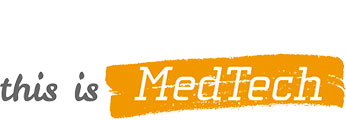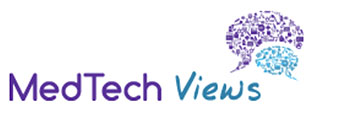How medical technology is bridging the accessibility gap
From plasters and pregnancy tests to ultrasound scans and prosthetics medical technology plays a vital role in our day-to-day lives. But how can new technologies make the world accessible to more people?
For people who need audio, visual, neurological and physical support to live independently, their specific needs can sometimes be missed in daily life, and they can be met with challenges using technologies which can fail to accommodate them. However, the medical technology industry is taking on the task of meeting those needs. From virtual reality (VR) headsets that assist in therapy and treatment, to bionic prosthetics that mimic the movements of limbs and joints, the advances being made in the sector are extraordinary.
Hugh Herr, a professor of media arts and sciences at the Massachusetts Institute of Technology (MIT) Media Lab, and co-leader of the K Lisa Yang Center for Bionics at MIT in the US, is one such pioneer. As a double amputee, he brings personal experience to his engineering and champions accessibility for those who need prosthetics. Two years ago, he and his team at the Center started a programme in Sierra Leone to strengthen the capabilities and services of the country’s orthotic and prosthetic sector.
“The Center aims to address the consequences of the civil war in Sierra Leone, where tens of thousands of people are grappling with limb loss,” Herr says. “Our comprehensive approach involves the creation of essential infrastructure, the development of robust supply chains, and the implementation of education technology to tackle the significant accessibility challenges in the region.”
The costs to make this happen are incredibly high, says Herr, which can be a barrier for people in countries like Sierra Leone who can lack money for basic necessities. The average wage in the country is 745,625 leone per month ($40/£32). But he is optimistic that the initiative started by the Centre will have a long-lasting impact in the region.
Herr is one of many examples of entrepreneurs improving the accessibility of patient care beyond clinical settings. Dopavision, founded by Hamed Bahmani, started with a primary focus to create a solution for people with myopia, a type of short-sightedness. The condition occurs when the eyeball is too long relative to the focusing power of the cornea and lens of the eye.
“We are developing an intervention which uses VR headsets and light stimulation which aims to prevent excessive eyeball growth that is associated with it,” Bahmani explains. “We wanted to deliver the treatment via a device that is accessible and doesn’t interrupt the daily life of a patient.”
The method behind Dopavision’s VR, which is powered by an application called MyopiaX, involves the application of light to proteins in the retina, to release dopamine to compensate for the lack of dopamine produced in a myopic eye. “We’re currently engaging in a clinical trial, using a combination of a smartphone and a VR goggle headset to assess the clinical effect of MyopiaX to treat children with myopia,” Bahmani explains. “This treatment has the potential to stop the progression of myopia in children, addressing a significant medical need. With myopia affecting a third of the global population and projected to impact half by 2050, it’s offering a crucial intervention to combat the condition’s serious medical implications.”
Combining mindfulness, psychology and AI technology, the cognitive health app Mindstep is a tool to empower users to seek help for their mental wellbeing.
“Mindstep started out really as an experiment to see if the technology we have available is at the level where we, as doctors, feel comfortable managing patients remotely or safely,” says Hamzah Selim, a doctor in the UK and Mindstep founder. “We’ve provided it to so many people, enabling them to access mental health resources from anywhere, addressing challenges such as mobility issues and social anxiety.”
Utilising technology and pairing it with the team’s medical knowledge and expertise is helping the app grow, with 86% of users who use Mindstep seeing a benefit to their cognitive or mental health, according to data sourced from an internal survey and shown to the BBC.
“AI is now allowing us to do what we set out to do, and really personalise and understand the nuances of every single individual and give them a really bespoke treatment,” Selim says. “Generative AI will make medical technology developments a two-way stream, allowing AI to output personalised information back to the individual. This is really exciting if done correctly, as it enables a new level of interaction and customisation in patient care.”
The app (which comes with a monthly fee) is not yet widely endorsed by the NHS – but NHS doctors have expressed to Selim how useful it has been to them and their patients. The team hope to have an NHS pathway up and running by early 2024.
VR can be used to raise awareness among neurotypical individuals about the challenges faced by neurodivergent people in workspaces, says Rachel Lowy, a PhD student at the Georgia Institute of Technology, who has been researching accessible technologies using her expertise as a speech-language pathologist.
“We partnered directly with neurodivergent people and neurotypical people who had worked with [VR], to ask, how should this technology be designed? What kinds of things can we show?” Lowy says.
Recognising the diversity within neurodivergent groups is crucial – Rachel Lowy
Current technologies often focus on simulating disabilities, but Rachel advocates for showcasing the capabilities and ingenuity that neurodivergent individuals bring. “Recognising the diversity within neurodivergent groups is crucial. One size does not fit all, and each person may have unique strengths, interests and ways of approaching challenges. For example, someone who has been blind their entire life has developed a lot of creativity around how they get around the world. We could use that knowledge in development.” Lowy says. “There’s a lot in the disability world, where instead of taking what we call a medical model of disability, where we see people as broken and needing fixing, we could move forward with a social model of disability, which acknowledges the societal barriers faced by those with different brains and bodies. The focus should be on understanding and accommodating individuals’ needs rather than assuming deficits that need correction.”
This shift from assessing and fixing what is ‘broken’ and instead accommodating individuals’ needs, will hopefully in time be integrated into traditional healthcare practices, she says.
We believe it’s crucial to evolve medical technology holistically – Kevin Esmezyan
“We believe it’s crucial to evolve medical technology into a more holistic category, addressing various accessibility needs,” agrees Kevin Esmezyan, the founder of Spectrums AI, a startup focused on implementing AI to help people with neurodevelopmental conditions, such as autism spectrum disorder (ASD) and attention-deficit/hyperactive disorder (ADHD), become more independent and autonomous. “We monitor, analyse and understand where and when people need help, enabling caregivers to be notified and share information more effectively.”
Esmezyan understands the responsibility to find a solution for people marginalised by their impairment. With technological advances continuing to evolve, medical technology has the potential to not just aid but to empower those living with specific needs.
Read the article on BBC StoryWorks here.
Posted on 14.02.2024


